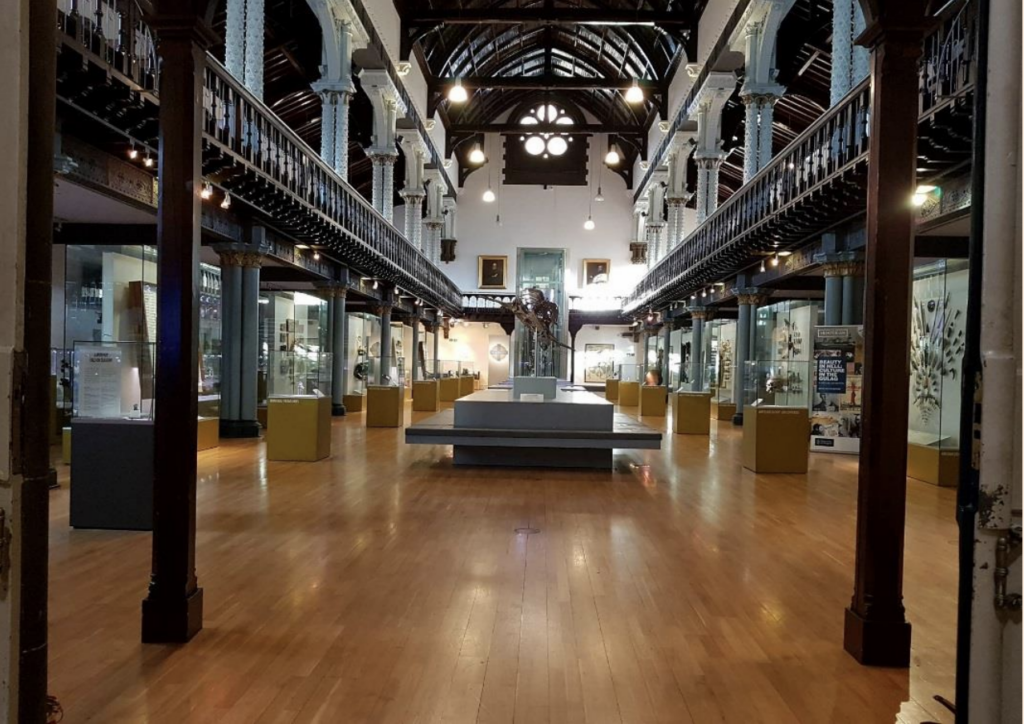Thinking: Differences between contemporary exhibitions and traditional art museum practices
The Hunterian Museum visited this time adopting a linear historical narrative as its core and constructing a knowledge system based on the authority of its permanent collections.

The spatial layout primarily features fixed exhibition walls and categorised display cabinets, emphasising the independence of artworks and appropriate viewing distances. The audience’s movement route is predetermined as a one-way flow, organised chronologically or stylistically, placing visitors in the role of passive recipients who statically “view” a fixed historical narrative.


The second exhibition,You Are My Kindred Spirit by Maud Sulter, touched me the most. My curatorial theme shares deep similarities with Sulter’s—both explore overlooked and invisible individual experiences and structural oppression.
Maud Sulter’s exhibition embodies the concept of a “living archive”. As Greg Thomas commented, through poetry, images, sounds, and family archives, the exhibition uses first-person narratives to question the absence of Black women in Western history, examining how cultural memory is distorted or erased by colonialism and racism.
Sound curation is central to this exhibition, transforming the space itself into a vessel for “sound archives” or “oral history”. For instance, visitors enter a small, dark, enclosed space to watch the highly personal video (Plantation, 1994/1995) or sit in the center of a room listening to Sulter’s poem The Alba Sonnets. Both experiences convey a curatorial narrative of “listening to obliterated voices” and “entering others’ memories”.


Critical Reflection:
In my curatorial project, I aim to create a subtle and nuanced space of emotion and memory, similar to Sulter’s exhibition, enabling audiences to empathize with East Asian women’s silent struggles with time poverty. However, as art critic Claire Bishop (2012) cautioned in her book Artificial Hells, excessive emotionalization and manipulation of sensory experiences may lead the audience to abandon critical thinking, becoming immersed purely in sensation. Thus, I must remain attentive to the boundaries of using sound and visual materials, ensuring that emotional resonance is balanced with space for reflecting on structural social issues.
Reference:
University of Glasgow – The Hunterian – Visit – What’s On? (2025). Gla.ac.uk. https://www.gla.ac.uk/hunterian/visit/whats-on/
Sulter , M. (2024). Live Programme – Maud Sulter – You are my kindred spirit. https://www.tramway.org/live-programme-maud-sulter-you-are-my-kindred-spirit/
Thomas, G. (2024, November 28). Maud Sulter: You are my kindred spirit | News & Press | Scottish Art News | Fleming collection. Flemingcollection.com. https://www.flemingcollection.com/scottish_art_news/news-press/maud-sulter-you-are-my-kindred-spirit
The Conversation. (2024, December 6). You are my kindred spirit: How growing up black in “the quiet racism of Scotland” shaped the art and politics of Maud Sulter. New Pittsburgh Courier. https://newpittsburghcourier.com/2024/12/06/you-are-my-kindred-spirit-how-growing-up-black-in-the-quiet-racism-of-scotland-shaped-the-art-and-politics-of-maud-sulter/


Leave a Reply